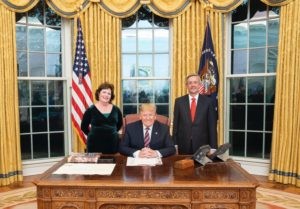Pope Francis’ comments on refugees and border policies during a 2019 apostolic visit to Asia sparked controversy and led some to question whether he was comparing then-U.S. President Donald Trump to the biblical King Herod. This article delves into the Pope’s remarks, the ensuing debate, and analyzes whether such a comparison was intended.
Pope Francis, while addressing Jesuits in Thailand, discussed the global refugee crisis, criticizing the “policy of waste” towards refugees and the construction of border walls. He stated, “Herod comes to mind,” in reference to leaders who separate families and build barriers. This remark ignited debate, with some conservative outlets, such as Breitbart, interpreting it as a direct attack on President Trump’s immigration policies.
Analyzing the Context: Pope Francis’ Words and the Herod Analogy
The Pope’s full quote, published in La Civilta Cattolica, provides crucial context. He lamented the rising populism and the construction of walls that “even separate children from parents,” leading him to invoke the image of Herod. King Herod, infamous for ordering the Massacre of the Innocents in an attempt to kill the infant Jesus, is a symbol of cruelty and tyranny.
While the Pope did not explicitly name President Trump, the timing of his remarks, coinciding with heated debates about U.S. border policies, fueled speculation. Critics of the Trump administration’s family separation policy at the border readily drew parallels to Herod’s actions.
Divergent Interpretations and Political Responses
Conservative figures, including Baptist pastor Robert Jeffress, a staunch Trump supporter, vehemently denied any similarity between Trump and Herod. Jeffress argued that Trump’s pro-life stance and embrace of Christmas celebrations contradicted the comparison. He highlighted Trump’s efforts to protect the lives of unborn children, contrasting them with Herod’s attempt to kill Jesus.
Others pointed out that the Pope’s comments were not solely directed at the United States. His broader critique of global migration policies and the dehumanization of refugees extended beyond any single nation’s borders. The Pope emphasized the Christian tradition of welcoming refugees and called for a more compassionate response to the crisis.
The Nativity Scene Controversy: A Reflection of Public Opinion
Adding fuel to the fire was a Nativity scene displayed at Claremont United Methodist Church in California. The scene depicted the Holy Family separated in cages, mirroring the family separation policies at the U.S.-Mexico border. This powerful visual representation sparked widespread discussion on social media and further highlighted the connection between the Herod narrative and contemporary immigration issues.
Conclusion: A Complex Question with No Easy Answer
Did Pope Francis intentionally compare President Trump to King Herod? The answer remains ambiguous. While the Pope’s invocation of Herod in the context of border wall discussions inevitably led to such interpretations, his remarks also addressed a wider range of global concerns. The controversy underscores the complex relationship between religious pronouncements, political discourse, and public interpretation. Whether a direct comparison or a broader commentary on inhumane policies, the Pope’s words resonated with many and ignited a crucial debate about the treatment of refugees and the moral responsibilities of nations.


